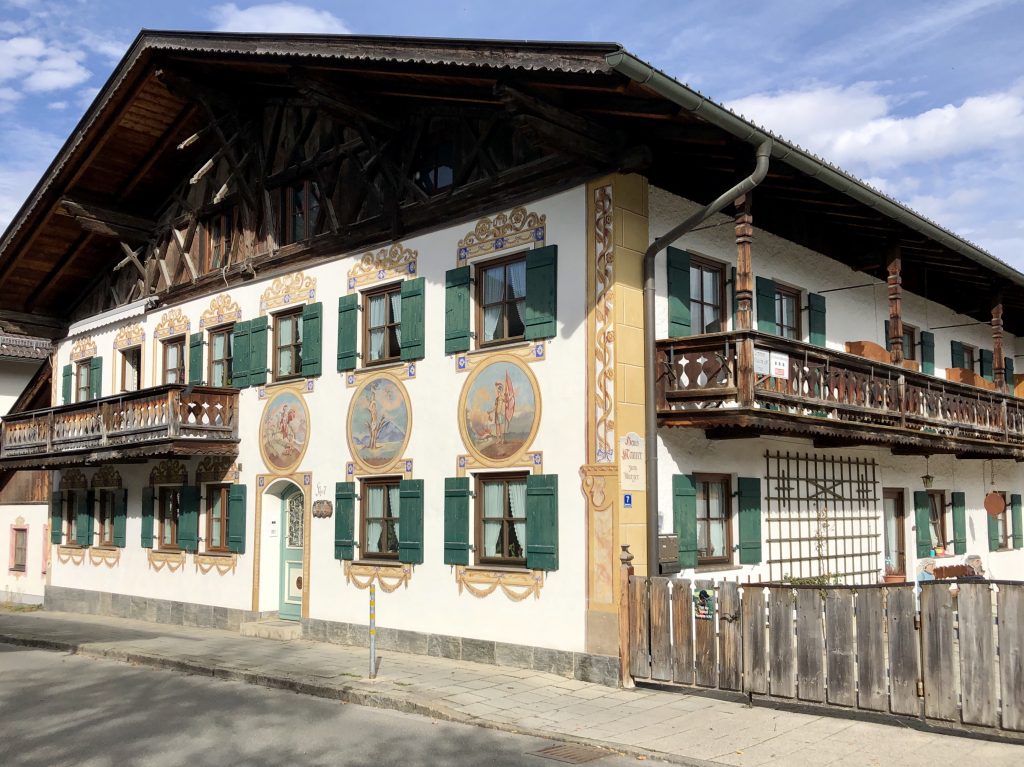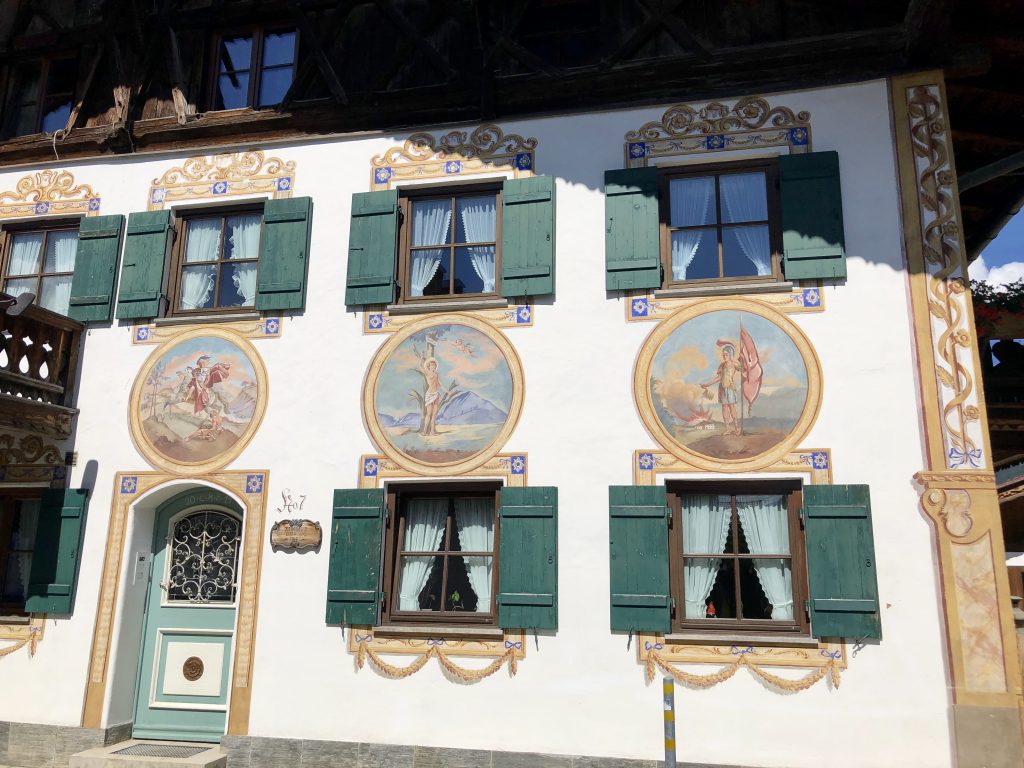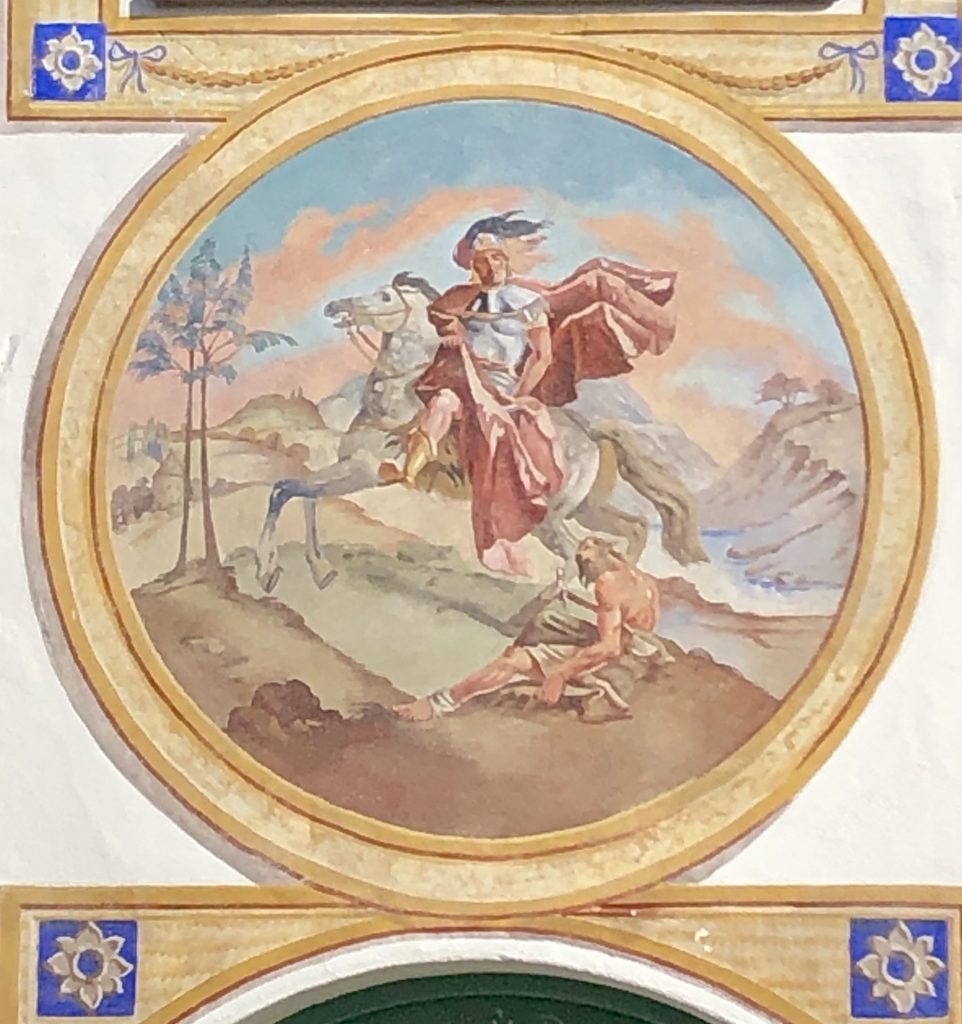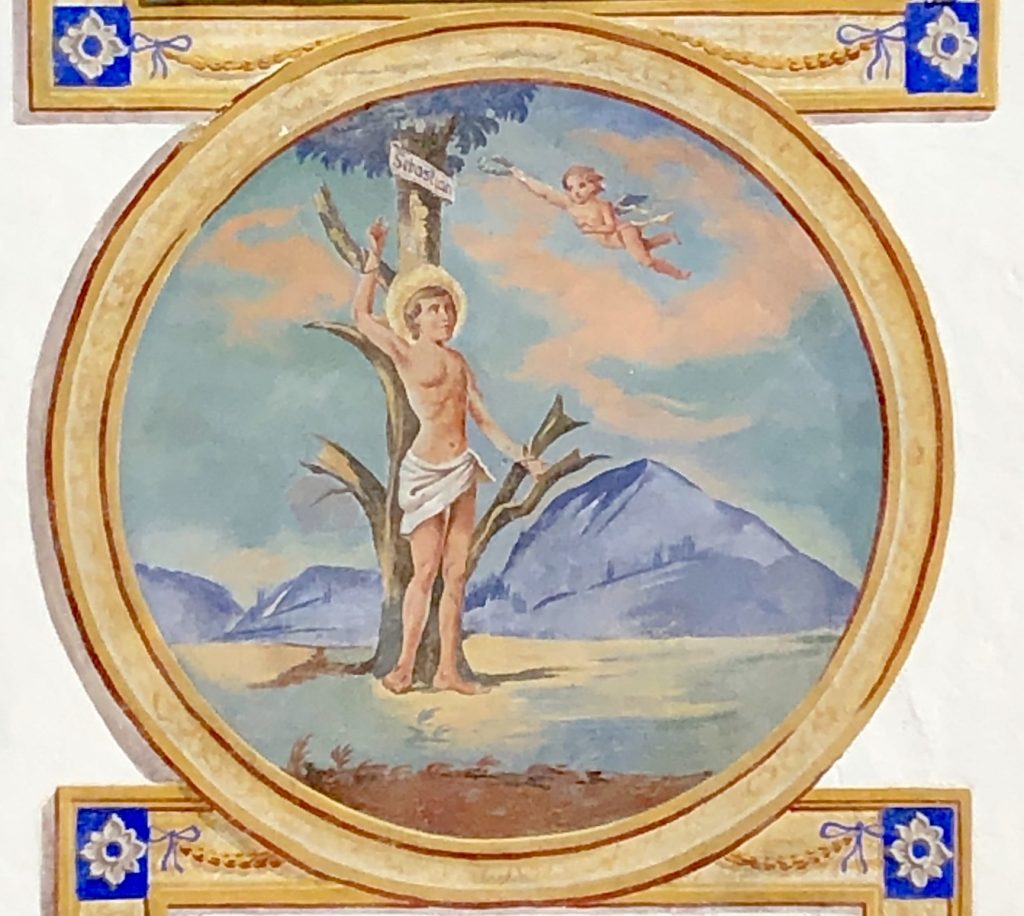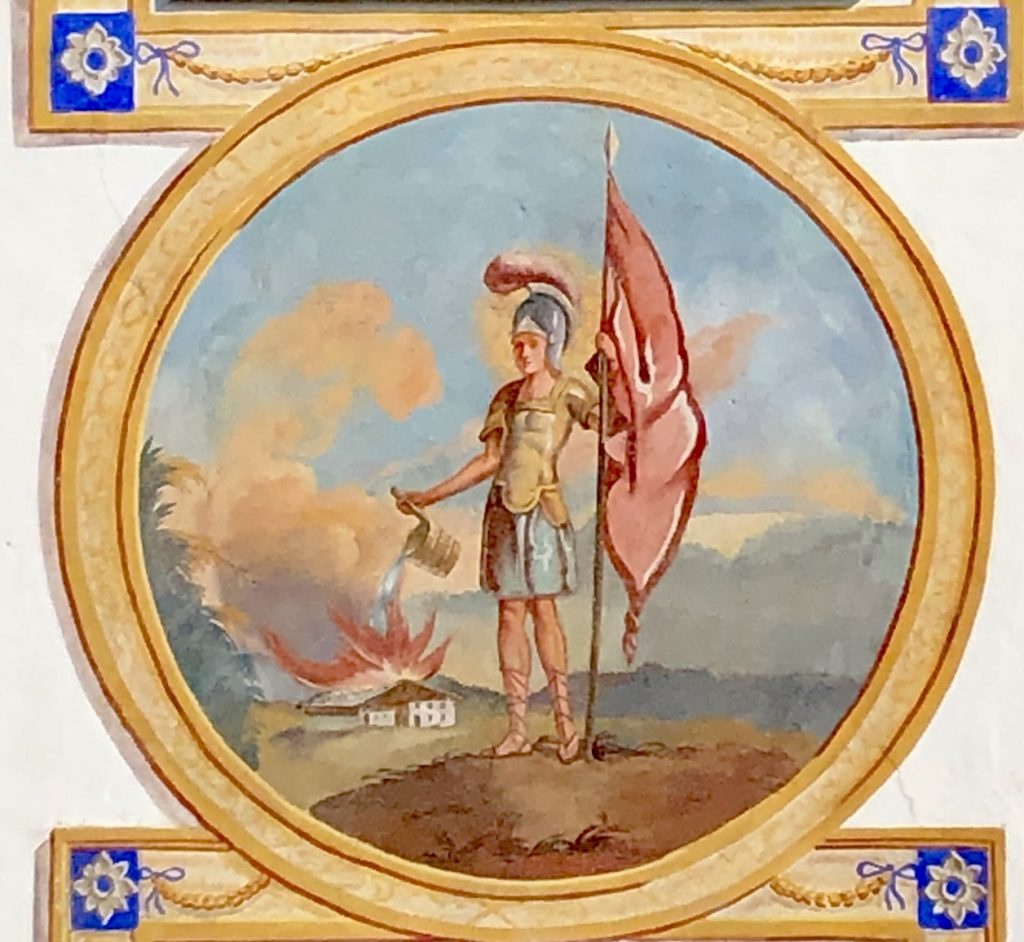Schmiedstraße
Schmiedstraße 1.
An inscription on the underside of the oriel window on the corner reads: “Gott schütze dieses Haus vor Sturm und Feuer, vor der Stadtplanung und der Steuer.”
“God protect this house from storm and fire, from urban planning, and from taxes.”
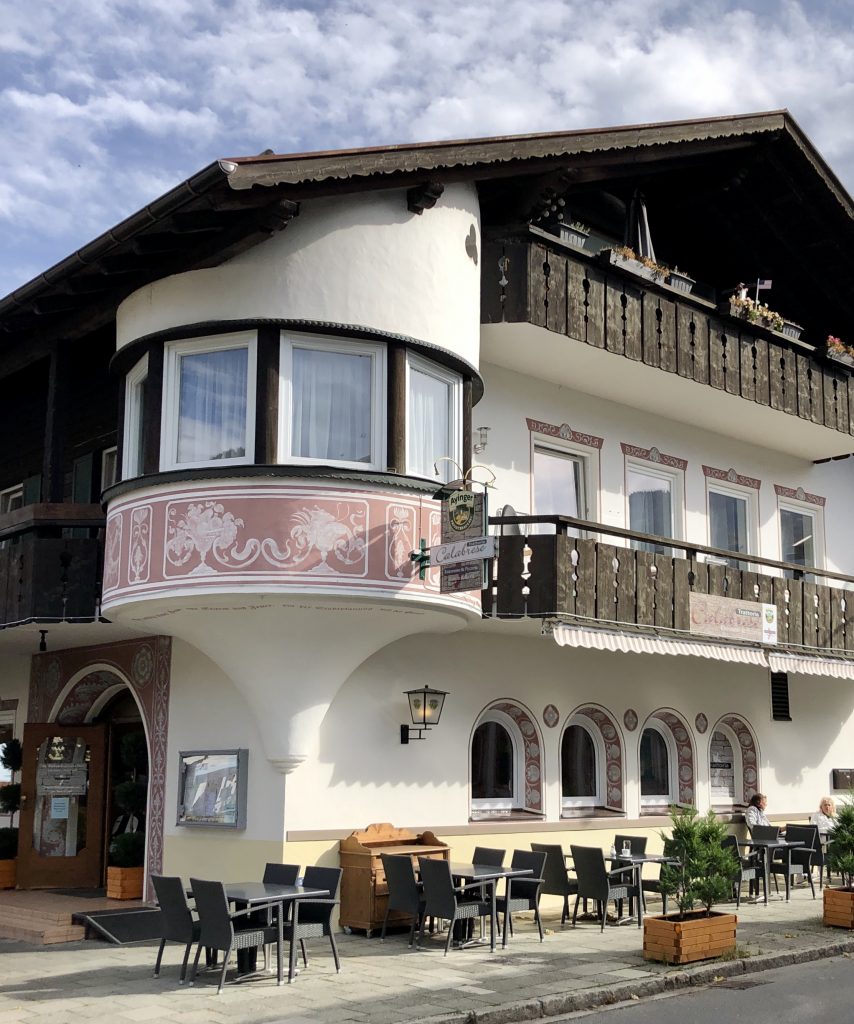
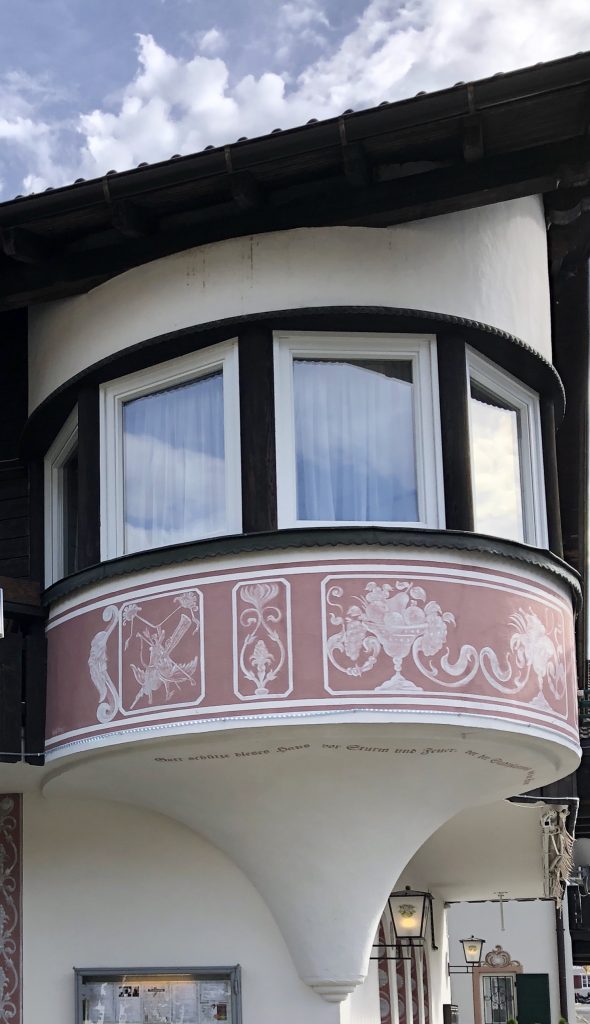
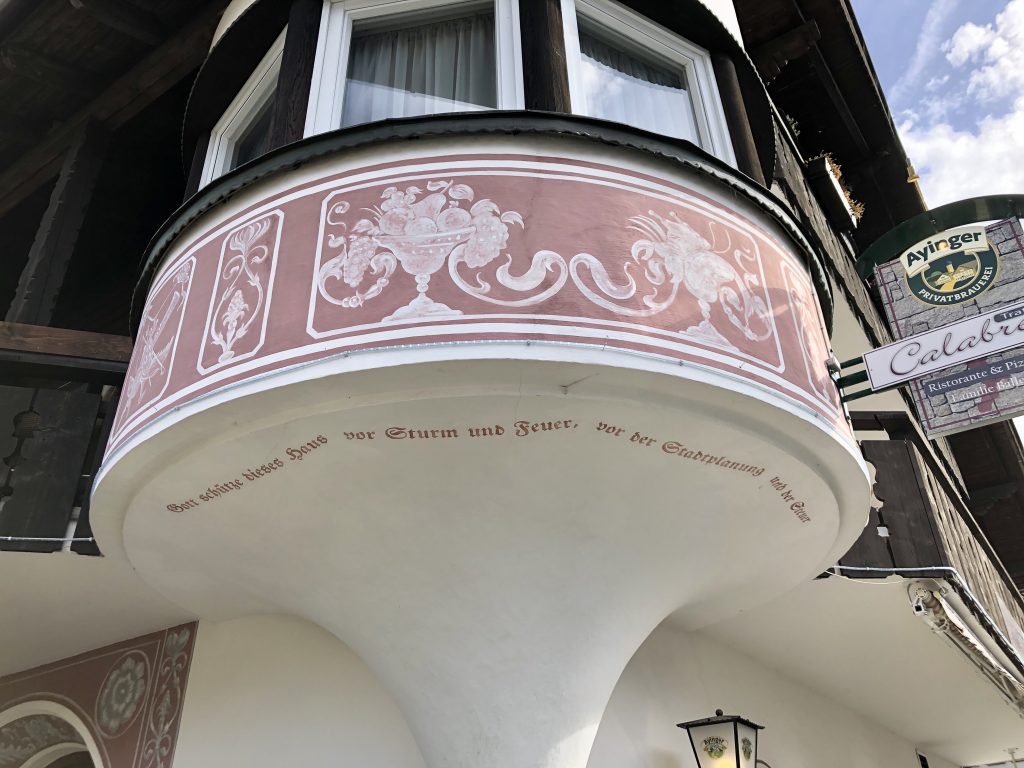
According to the tourist office’s plaque on the wall, the building at Schmiedstraße 2 has been standing since before 1294.
In 1791, “the house was acquired by the merchant Johann Jakob Mayr, who became wealthy trading in Italy.”
Two years later, he transferred the house to his son, Alois Mayr, as a marriage gift. Alois ran a wine tavern on the premises and was the one who commissioned the neo-classical murals some time before 1800 which can still be seen on the walls today.
The lüftlmalerei here depict the return to Canaan by the scouts sent by Moses and portraits of the female saints Helena and Catherine, all incorporating a grape motif — a reference to the owner of the building being the foremost wine merchant in town.
In 1821, the Mayr family relocated to Ferrara and the house was sold to a glazier (a person whose trade is fitting glass into windows and doors) named Josef Ostler. Hence the name of the building, Haus “zum Glaser,” and the sign on the wall advertising the “Glaserei M. [Mathias] Ostler”.
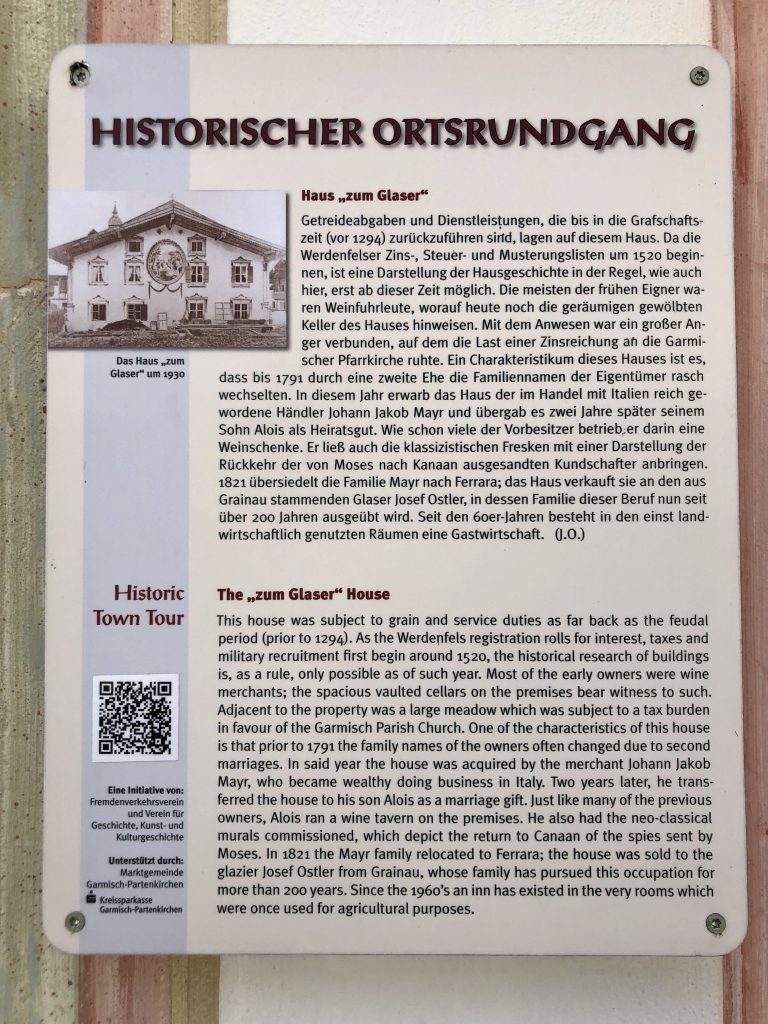
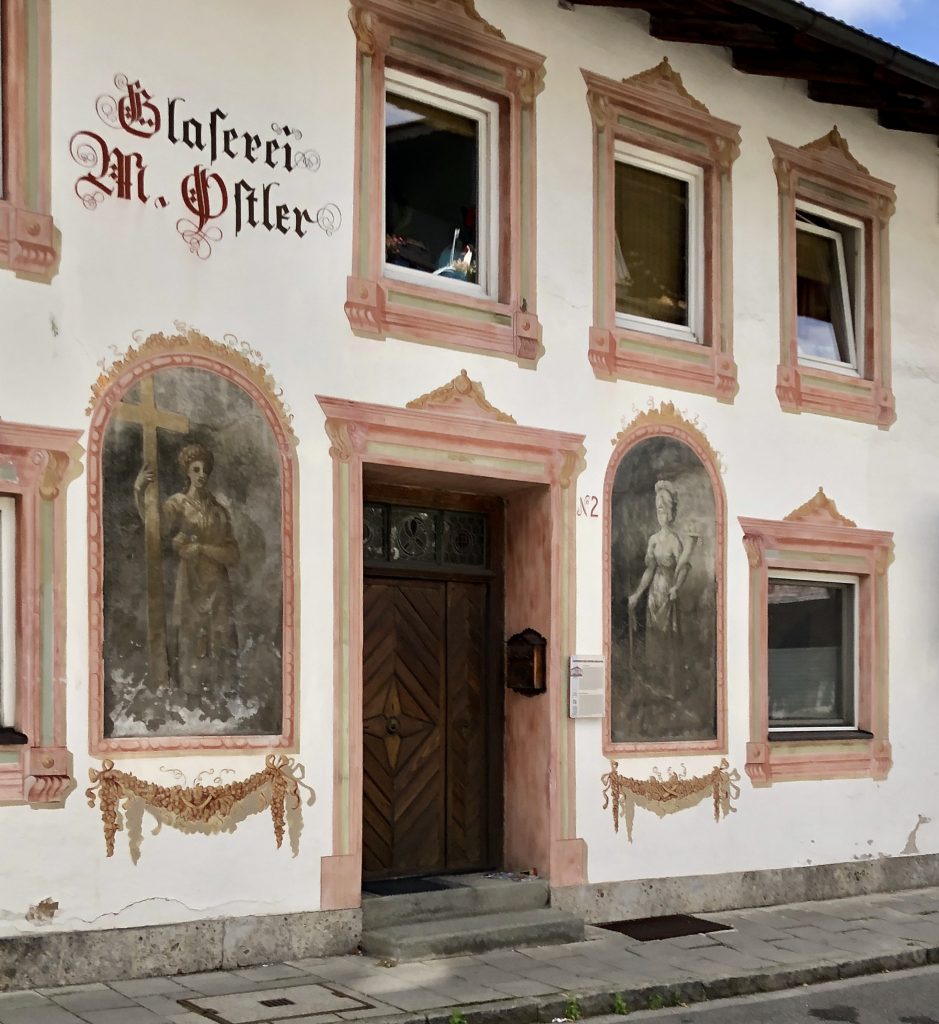
On the wall facing the street, two lüftlmalerei on either side of the door first painted by an unknown artist some time before 1800. On the left, Saint Helena with the cross, on the right, the Saint Catherine with the wheel.
Empress Helena, mother of Constantine, the first Christian emperor of Rome, travelled to the Holy Land in 326–328, founding churches and establishing relief agencies for the poor. Legend has it that she discovered the final resting place of the three crosses, nails, and rope used to crucify Jesus and the two thieves — Dismas and Gestas — executed with him.
According to the traditional narrative, Saint Catherine was the daughter of Constus, the governor of Alexandria during the reign of the Roman emperor Maximian (286–305). A vision of the Virgin Mary and infant Jesus persuaded her to become a Christian. When the Christian persecutions began under Maxentius, she was imprisoned and tortured. Finally, Catherine was condemned to death on a spiked breaking wheel, but, at her touch, it was the wheel that shattered — not her.
Maxentius then ordered her beheaded.
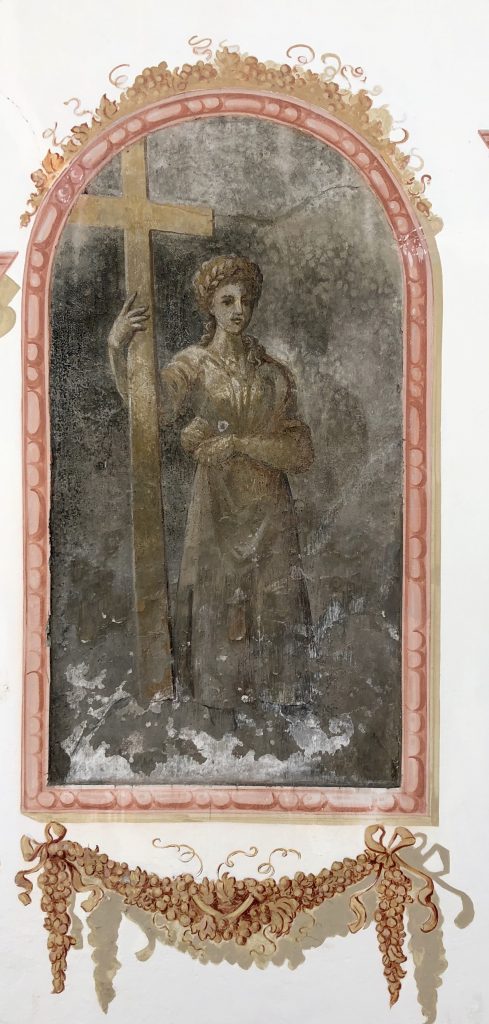
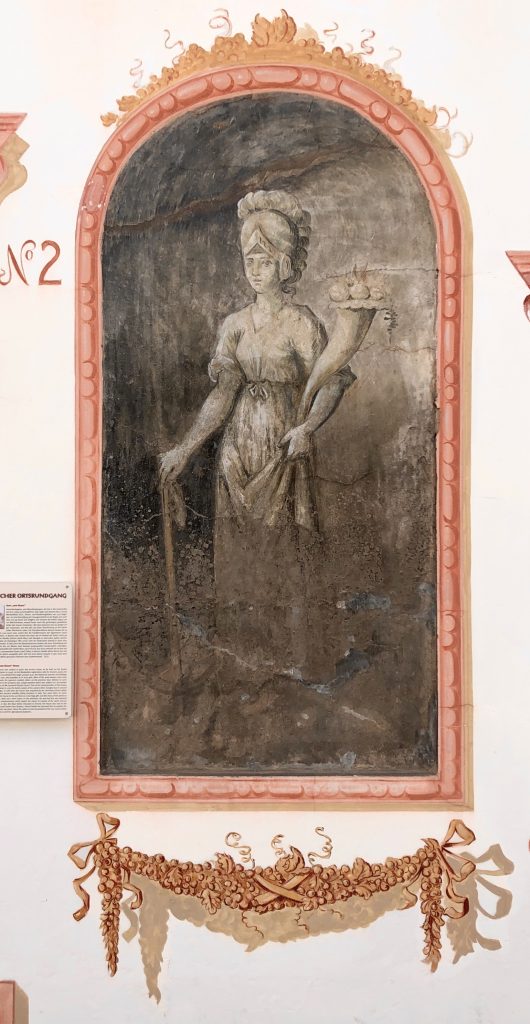
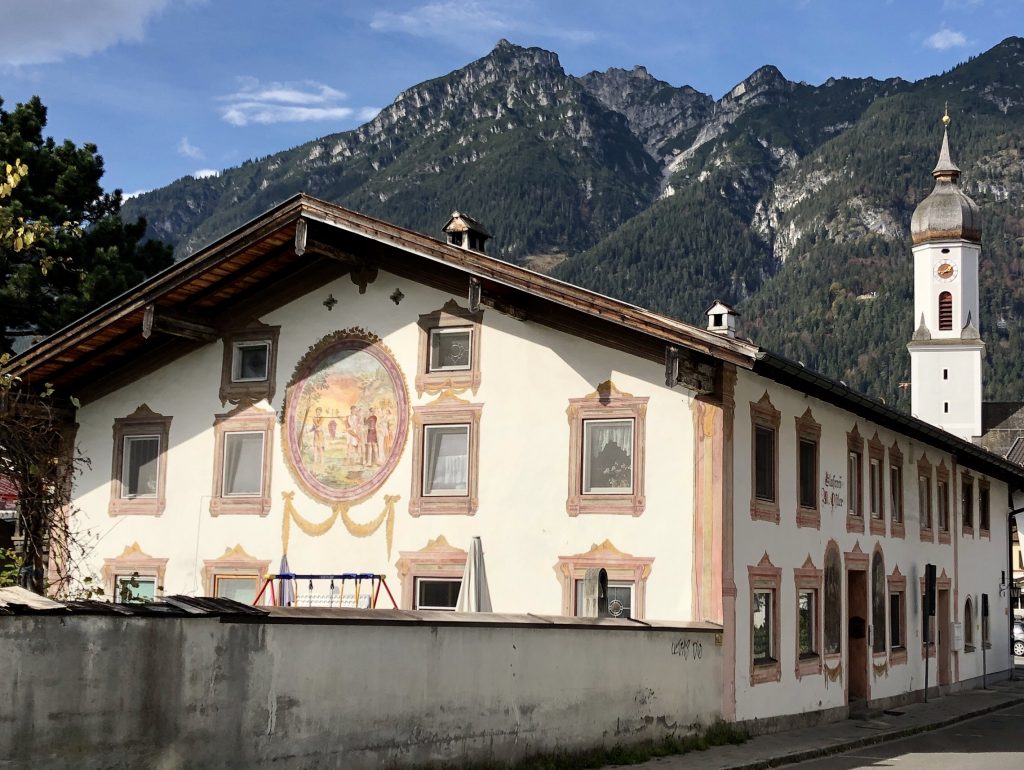
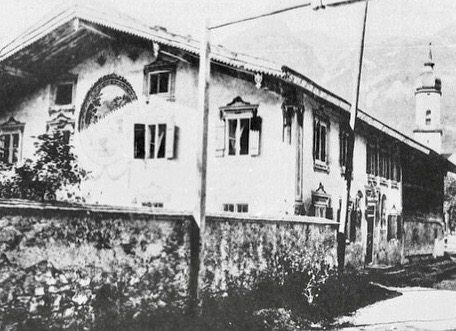
Online at the Marburg Photo Archive, you can see a photo of what this building looked like some time between 1885 and 1920.
Stories from the Old Testament are rare for lüftlmalerei. However, on the back wall, inside a medallion intricately ringed by grape leaves, first painted by an unknown artist some time before 1800 and restored by Gerhard Ester, “The Return of the Scouts,” is from a passage from the Book of Numbers.
The Lord said to Moses, “Send some men to explore the land of Canaan, which I am giving to the Israelites.”
-- Numbers, 13:1-2
When they reached the Valley of Eshkol [meaning "cluster"], they cut off a branch bearing a single cluster of grapes. Two of them carried it on a pole between them, along with some pomegranates and figs. That place was called the Valley of Eshkol because of the cluster of grapes the Israelites cut off there. At the end of forty days they returned from exploring the land.
They came back to Moses and Aaron and the whole Israelite community at Kadesh in the Desert of Paran. There they reported to them and to the whole assembly and showed them the fruit of the land. They gave Moses this account: “We went into the land to which you sent us, and it does flow with milk and honey! Here is its fruit."-- Numbers, 13:23-27
In the lüftlmalerei, you can see two scouts returning to present a large cluster of grapes on a pole between them.

At the other end of the building, the Flösserstube Restaurant.
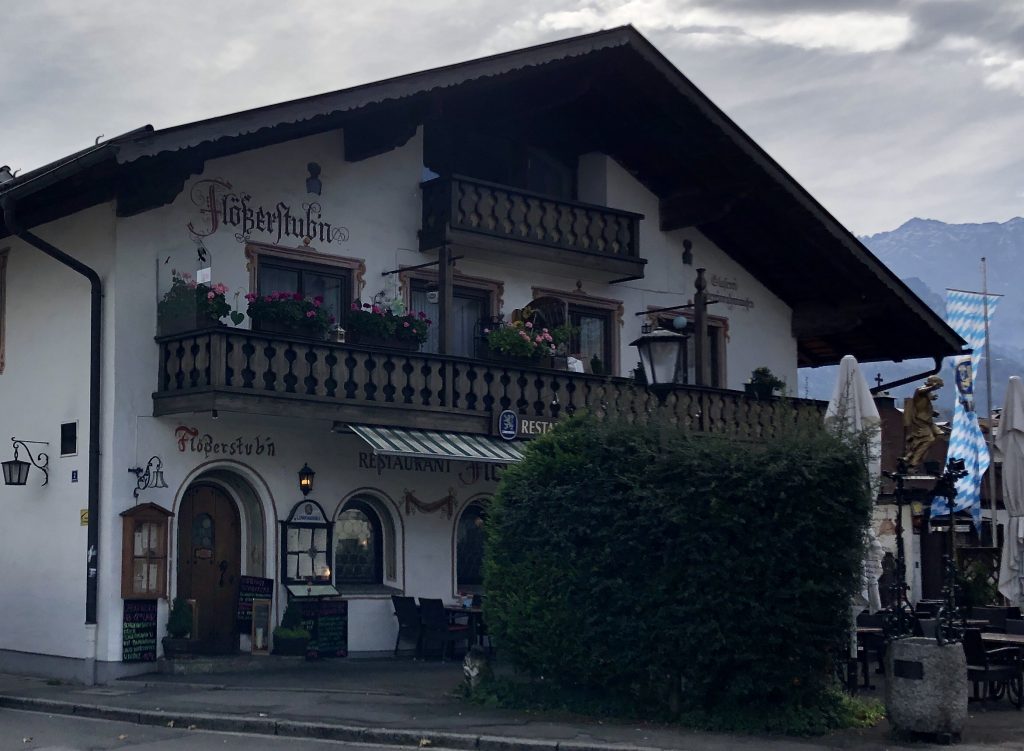
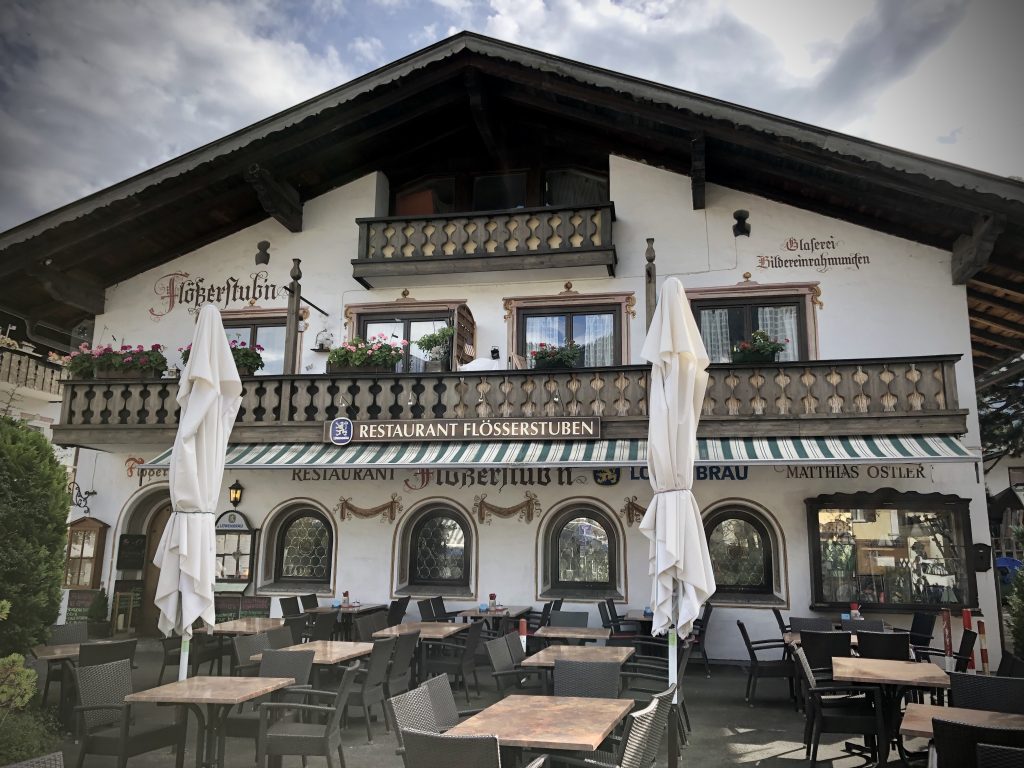
Schmiedstraße 3.
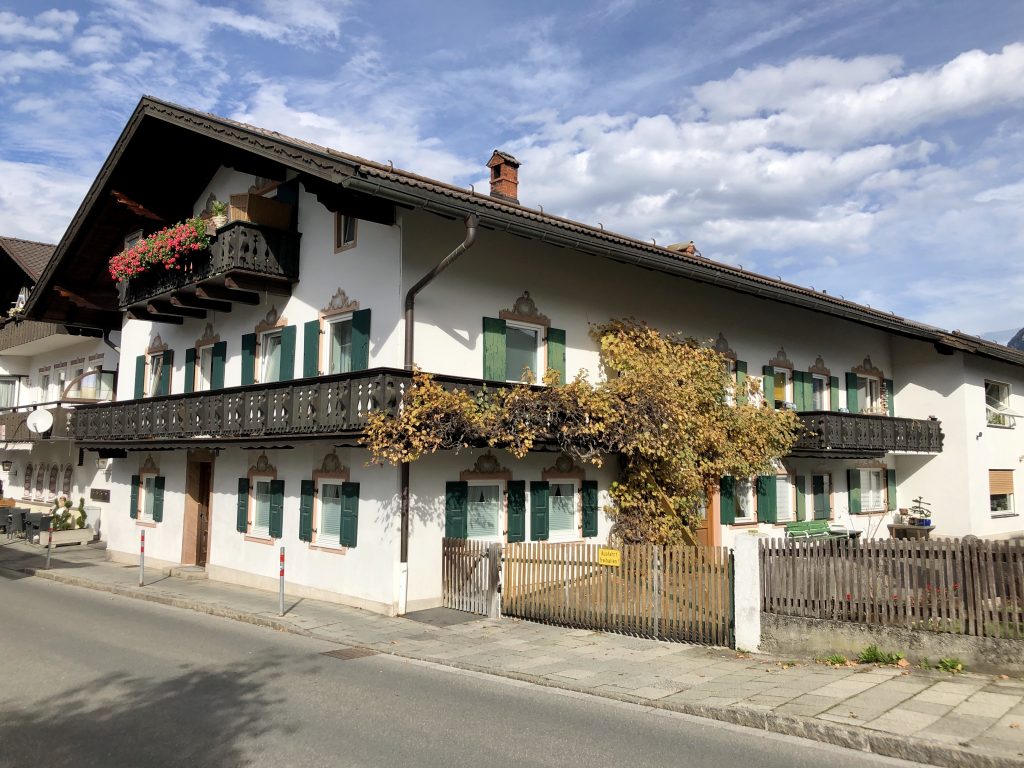
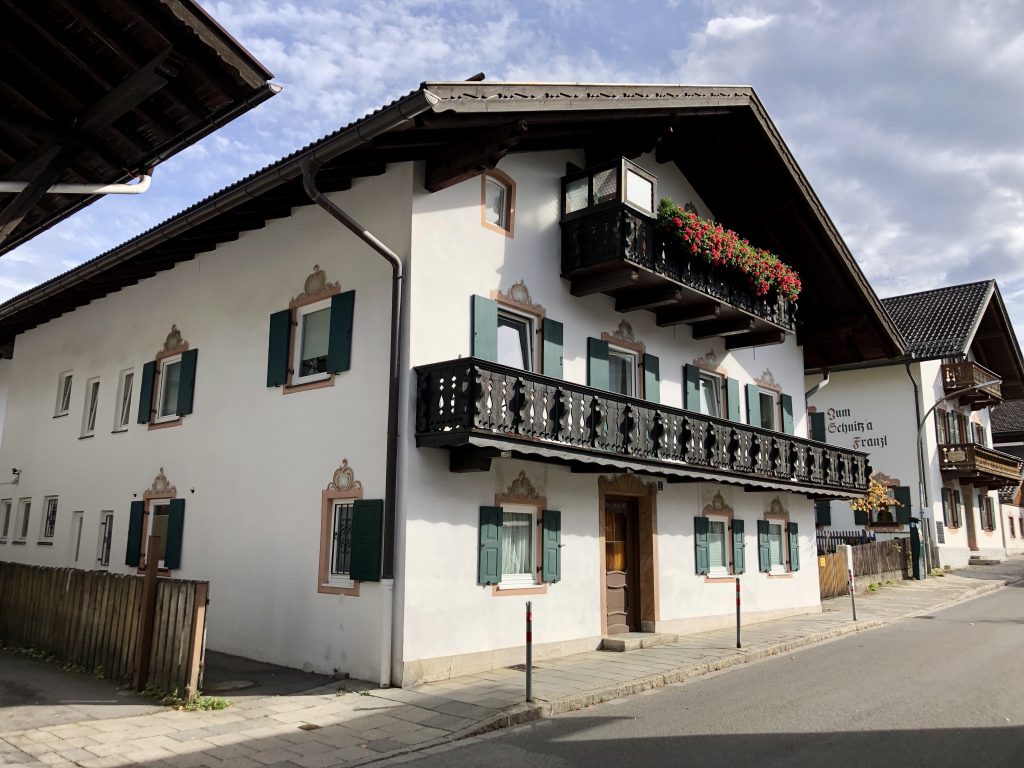
Schmiedstraße 5.
False window.
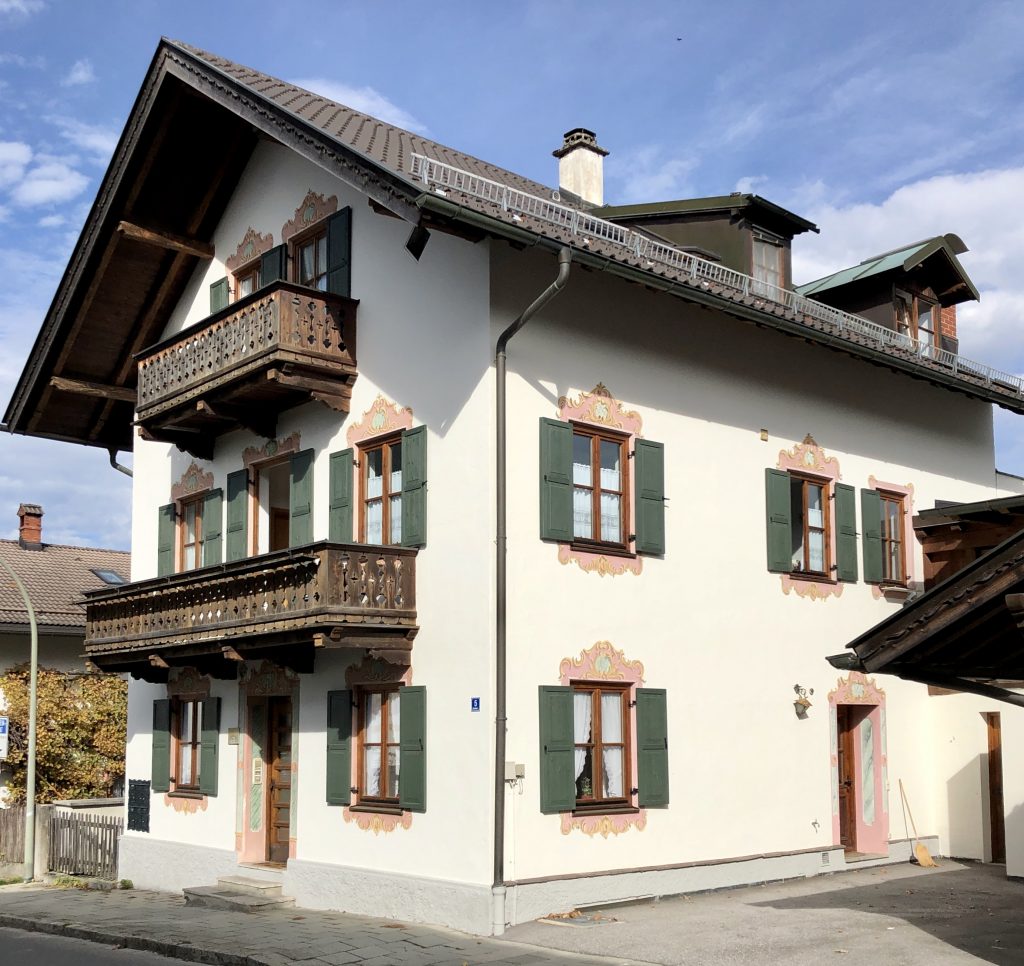
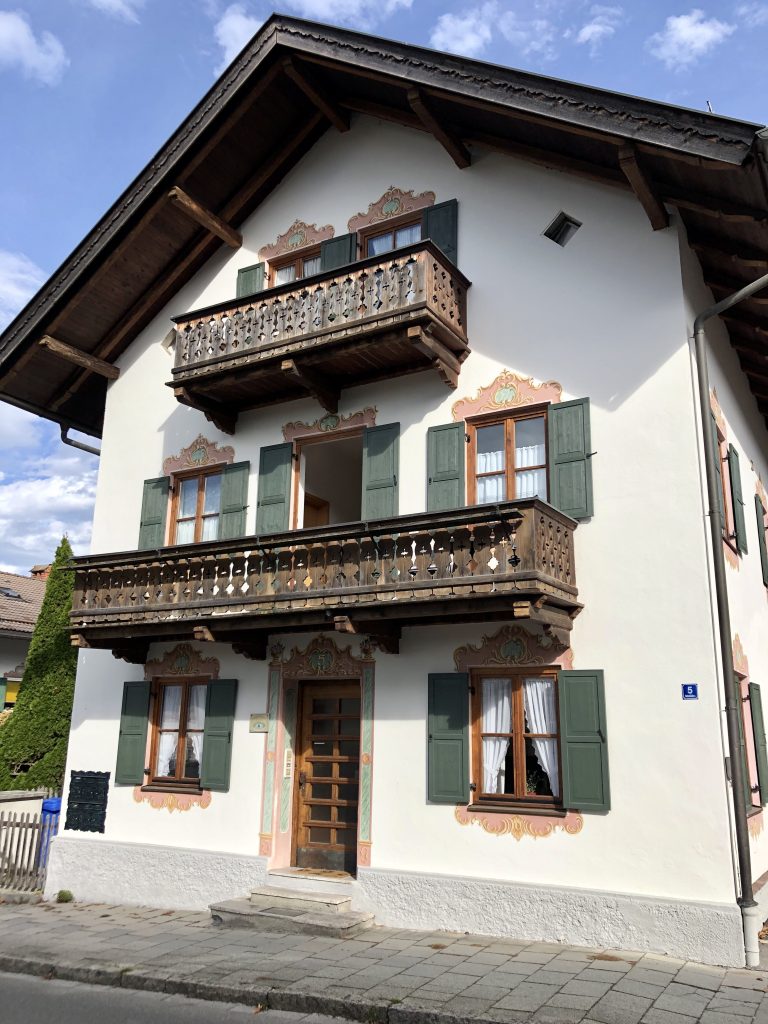
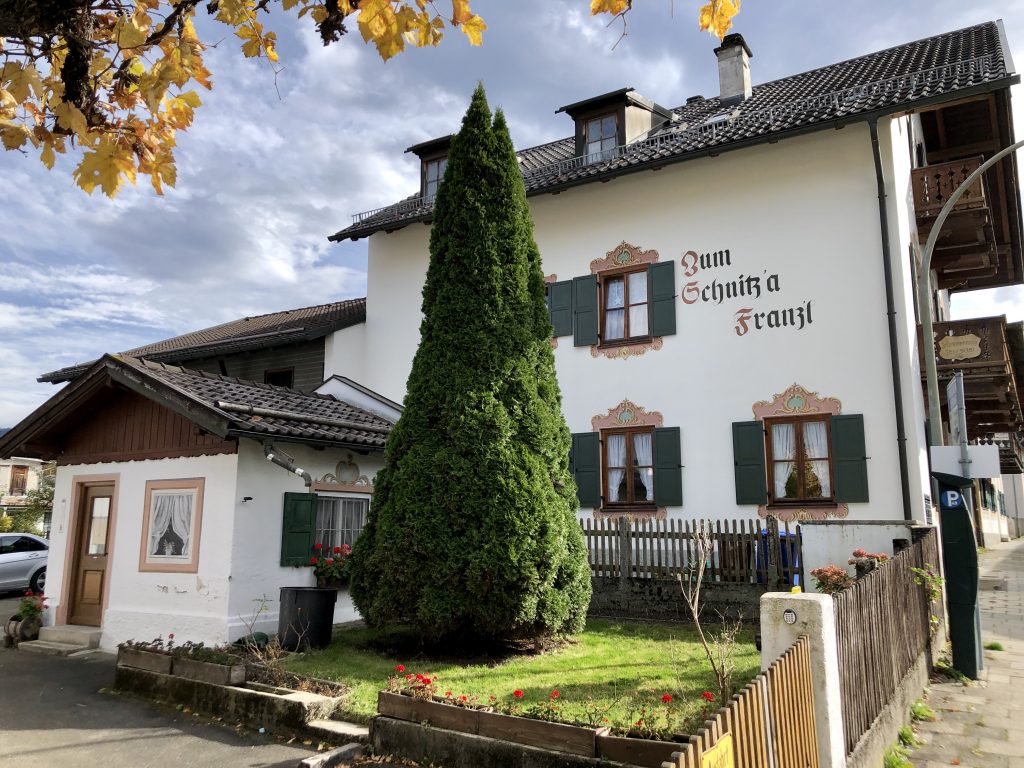
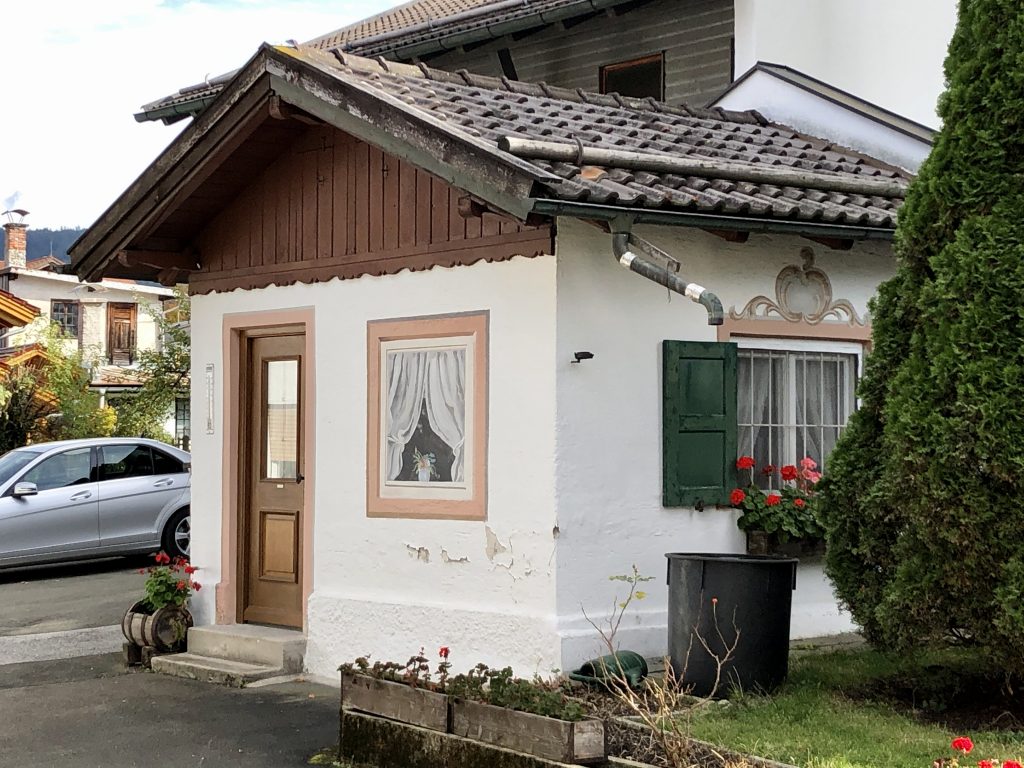
On Schmiedstraße 7, three medallions in the style of classicism tell about the life of Saints Martin, Sebastian, and Florian painted by an unknown artist in 1797.
Online at the Marburg Photo Archives, you can find a photo of this building as it looked some time between 1885 and 1920.
